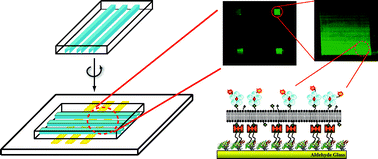Microfluidic fabrication of addressable tethered lipid bilayer arrays and optimization using SPR with silane-derivatized nanoglassy substrates†‡
Abstract
We report the microfluidic fabrication of robust and fluid tethered bilayer arrays within a poly(dimethylsiloxane) (PDMS) chip, and demonstrate its addressability and biosensing by incorporating the GM1 receptor into the bilayer framework for detection of cholera


 Please wait while we load your content...
Please wait while we load your content...